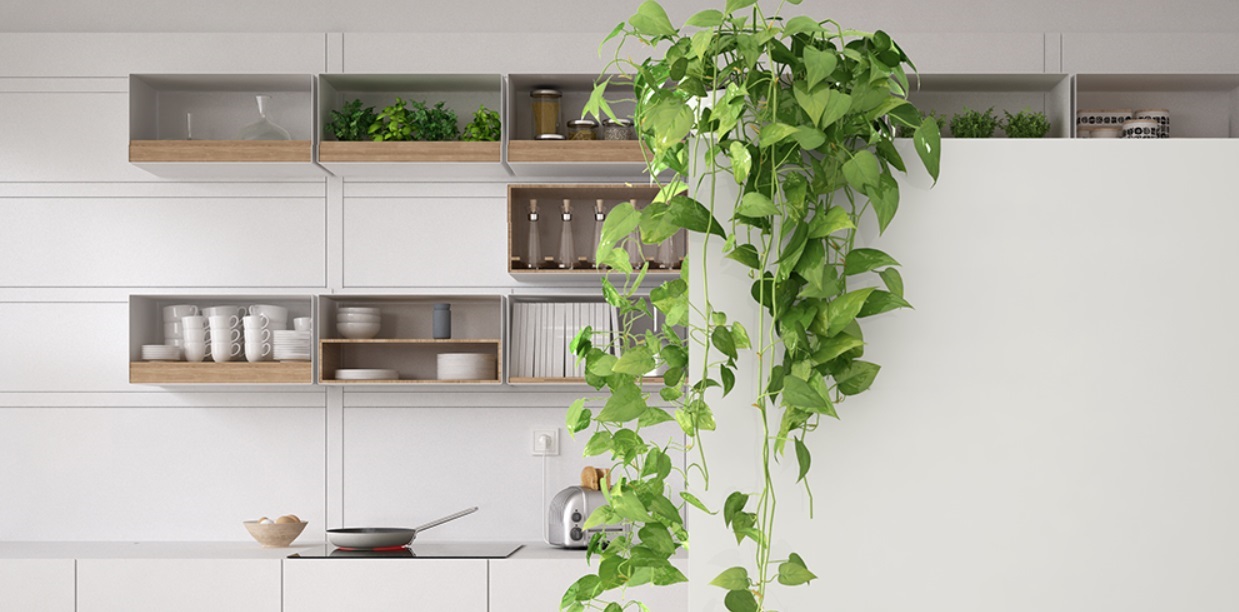
Want to add height and elegance to a room with indoor climbing plants? Vining plants rely on ingenious climbing adaptations, including twiners that elegantly intertwine around supports, scramblers that wrap themselves around walls, and self-clinging varieties that cling by their aerial roots.
Climbing house plants offer classic beautiful flowers in spring with sweet fragrance. Get ready to lean about the four (4) suitable climbing house plants.
Clematis
Clematis can be a beautiful addition to any garden and a classic choice for the front of a home. Whether you prefer the delicate beauty of a white flowering ‘Nellie Moser’ or the rich magenta, purple and mauve hues of ‘Barbara Jackman’ it’s easy to grow a variety that suits your taste.
Clematis vines add a beautiful impact to the garden and look stunning draped over fences, walls, pergolas and even buildings. They’re also great for growing in containers. The secret to success is to provide plenty of light and a sturdy support structure, and regular pruning. Misting occasionally helps with those varieties that prefer higher humidity levels.
Like many climbing plants, clematis requires rich, well-draining soil.
For planting, dig a hole that’s twice the size of the plant pot or rootball and amend it with compost, planting mix or well-rotted leaf mold to improve nutrient and water retention. Mulch heavy in winter to help clematis establish, and ensure it has plenty of horizontal support to grab onto with its tendrils or hooks.
Jasmine
Jasmine commonly known as a chameli flower is a highly aromatic flowering vine in the olive family that captivates the senses with its beautiful flowers and heavenly scent. The plant is versatile and can be used as a hedge, shrub, ground cover, or fragrant climber for trellises, walls, or fences. Jasmine can be grown from seed or purchased at reputable nurseries.
Seeds should be soaked in warm water to soften the hard coat before planting. A well-draining potting mix is ideal for this type of planting. Plant two seeds in a pot about half an inch deep and space them adequately. Cover the tray or pot with plastic wrap or a clear lid to create a greenhouse effect and aid in germination.
Once established, jasmine is relatively drought tolerant. It requires moderate to full sunlight but can grow in shaded areas as well. Regular summer water speeds growth and promotes flowering. A balanced, slow-release fertilizer is also important for this plant. Prune the vine to control its shape and keep it from overcrowding. This evergreen flowering vine blooms throughout the summer.
Aphids, common pests of all climbing plants, can often be a problem for Star Jasmine. These small, soft-bodied insects are green or yellow and can congregate on the undersides of leaves. Inspect the plant regularly for aphids and treat promptly with a strong water spray or insecticidal soap to prevent distorted foliage and stunted growth. Mealybugs, which are covered with a white waxy substance, can also be problematic for jasmine. Inspect the plant regularly and apply a light coating of insecticidal soap or neem oil to protect it from these destructive bugs.
Hydrangea
Hydrangea is an ideal climbing plant for walls and trellises, adding interest to gardens both formal and informal. It’s also a beautiful and unique option for creating natural green walls in public spaces such as parks, where it can transform otherwise bland or utilitarian buildings or fences into lush green oases. Climbing hydrangeas are also beneficial for wildlife as they’re pollinator magnets and provide shelter for small birds and butterflies.
Hydrangea petiolaris grows best in dappled shade, but can adapt to partial sun or full sun. They are more prone to frost damage in spring, so a location protected from the elements is important. They are tolerant of most soil types, but they need rich, well-drained soil with plenty of organic matter mixed in. Mulch the root zone regularly to keep the surface roots moist and cool.
If you want your hydrangea to flower, prune it after the flowers fade in summer. This will encourage branching and more lateral stems, which will then produce more flowers in the following season. You can also control the color of your hydrangea by adjusting the acidity or alkalinity of the soil it’s planted in; Big leaf hydrangeas bloom pink when grown in neutral to slightly acidic conditions, while Oak leaf and Mountain species will flower blue when grown in more alkaline soil.
Like other climbing plants such as clematis and jasmine, hydrangeas need a trellis or wire to climb on. It’s important to get this in place before you plant so that the vines have something to grab onto and aren’t left to grow unruly.
Sollya heterophylla
The flowers of this delightful evergreen twining plant are a great attraction to bees and butterflies. A native of Australia, this lovely plant produces attractive blue bell-like flowers in nodding axillary clusters throughout summer and autumn. It can be grown in a container for the patio, or planted outdoors in less frost prone areas of the garden as a wall climber or to cover arbors and trellises to add height and interest. It also looks good cascading from a window box and will continue flowering long after other climbing plants have finished.
Known by the common name Bluebell creeper, Sollya heterophylla is half woody, half herbaceous with voluble stems bearing bright sky blue flowers all summer long. It is a fast growing, evergreen vine that is ideal for coastal gardens or for use in a pot to decorate a patio or conservatory. Although it is hardy, for the best results it should be kept indoors during winter and only grown outdoors in a very mild climate.
Most climbers require some form of support, which a trellis or wires can provide, or can be left to grow into existing structures such as walls or obelisks. Some, like ivy, are true ramblers and will spread by means of their aerial roots but most twining climbers such as clematis and passion flowers will twine around the structure and need to be tethered in some way.
Read More.

